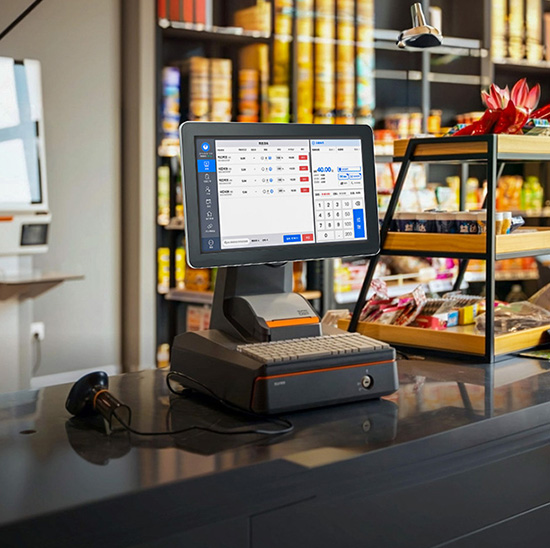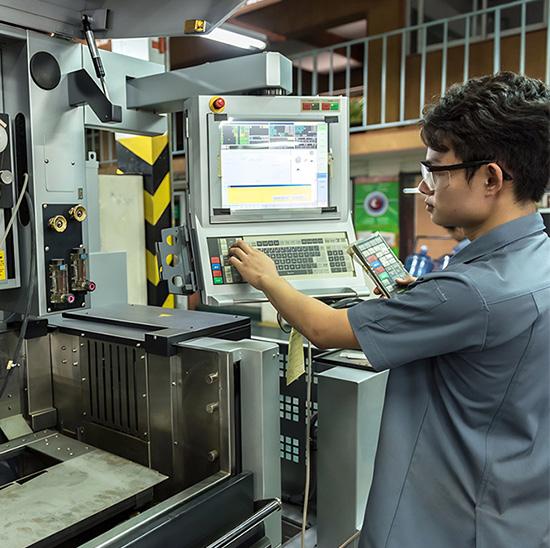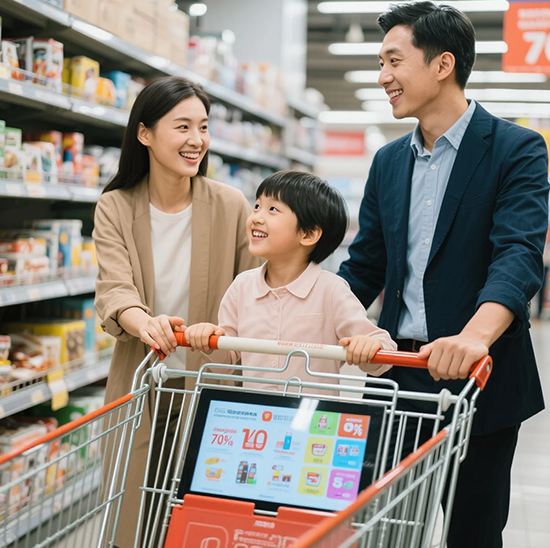In today’s retail landscape—where customers crave instant access to product information, personalized recommendations, and self-service convenience—Interactive Touch Screens for Retail Product Kiosks have become a game-changing solution. Unlike static display kiosks that offer limited engagement, these specialized touch screens transform kiosks into dynamic hubs that empower shoppers to browse inventory, compare products, and even complete purchases independently. For retailers, they bridge the gap between physical and digital retail (phygital), extending store reach, reducing staff workload, and capturing customer data to refine offerings. Whether deployed in department stores, electronics shops, or grocery stores, Interactive Touch Screens for Retail Product Kiosks redefine how customers interact with brands and how retailers drive sales. This article explores their core features, key applications, and impactful benefits, helping retail owners and operations managers select touch screen solutions that enhance kiosk performance and customer satisfaction.

Core Features of Interactive Touch Screen for Retail Product Kiosks
1. Intuitive, Customer-Centric Touch Performance
The primary strength of Interactive Touch Screen for Retail Product Kiosks is its ability to deliver seamless shopper interaction:
Ultra-responsive touch (≤2ms latency): Ensures instant registration of taps, swipes, and pinches—critical for smooth browsing of product catalogs, image galleries, and interactive maps.
Multi-touch support: Enables gestures like zooming into product details (mis., fabric textures, electronics specs) or scrolling through review sections, mimicking smartphone usability that customers know and expect.
Gloved and wet-hand compatibility: Enhanced capacitive or infrared technology works with winter gloves (in mall kiosks) or damp hands (in grocery settings), eliminating interaction barriers.
2. Durable Design for High-Traffic Retail Environments
Retail kiosks face constant use, accidental impacts, and varying conditions—and these touch screens are built to endure:
Commercial-grade tempered glass: 2.5mm+ thick, scratch-resistant glass withstands frequent touches, accidental knocks from shopping carts, or drops of small items (mis., keys, wallets).
Spill and dust resistance: IP65-rated sealed enclosures protect internal components from soda spills, food crumbs, and dust common in retail spaces, ensuring reliability in high-traffic areas.
Anti-fingerprint coatings: Specialized finishes reduce smudges, maintaining screen clarity without constant cleaning—saving retail staff time and ensuring kiosks look professional.
3. High-Visibility Displays for All Retail Settings
Clear visibility ensures shoppers can engage with kiosks in any lighting condition—and these touch screens deliver:
High-brightness (500+ nits) panels: Cut through glare from store windows, overhead lighting, or outdoor sun (for mall entrances or curbside kiosks), ensuring product images and text are readable at a glance.
High-resolution (1080p+) screens: Render product photos, videos, and pricing details with crisp clarity, helping shoppers make informed decisions (mis., comparing smartphone models or clothing colors).
Wide viewing angles (178°): Allow multiple shoppers to view the screen simultaneously—ideal for family browsing or staff assisting customers with kiosk interactions.
4. Seamless Integration with Retail Systems
Interoperability with retail tools is critical for operational efficiency—and these touch screens offer full connectivity:
POS and inventory integration: Syncs with point-of-sale (POS) systems (mis., Square, Shopify POS) and inventory management software to display real-time stock levels, pricing, and promotional discounts.
CRM and loyalty program integration: Links to customer relationship management (CRM) tools to pull up loyalty points, past purchases, and personalized recommendations based on shopper history.
Payment processing compatibility: Works with embedded card readers, mobile payment tools (Apple Pay/Google Pay), and QR code scanners to enable on-kiosk checkout.
5. Customizable Retail-Centric Interfaces
Every retail brand has unique kiosk goals—and these touch screens adapt to specific needs:
Branded interfaces: Customizable color schemes, logos, and fonts align with brand identity, turning kiosks into extension of in-store branding.
Purpose-built templates: Pre-configured layouts for different use cases (mis., product lookup, size selection for clothing, recipe suggestions for groceries) reduce setup time.
Dynamic content updates: Cloud-based management lets retailers update product catalogs, promotions, or kiosk flows remotely—no need for on-site technical adjustments.
Key Applications of Interactive Touch Screen for Retail Product Kiosks
1. Product Information & Discovery Kiosks
In department stores, electronics retailers, or home improvement shops, these touch screens power information hubs:
Interactive catalogs: Shoppers browse full product lines (including out-of-stock items) with search filters (mis., price, brand, features) and view 360° product videos.
Comparison tools: Side-by-side comparisons of specs, reviews, and pricing (mis., “laptop model A vs. model B”) help shoppers make confident purchases.
Locator features: Interactive store maps guide shoppers to where products are located on the sales floor, reducing staff inquiries about product placement.
2. Self-Service Checkout & Order Kiosks
For fast-fashion, quick-service retail, or grocery stores, Interactive Touch Screen for Retail Product Kiosks enable self-service:
Scan-and-pay functionality: Shoppers scan barcodes of items (or select from digital menus) and complete payments via card, mobile wallet, or gift card—reducing checkout lines.
Custom order options: In clothing stores, shoppers select sizes, warna, and customizations (mis., monogramming) and place orders for in-store pickup or delivery.
Returns processing: Self-service returns via touch screen—shoppers enter order numbers, select return reasons, and print return labels, streamlining the process.
3. Loyalty & Personalization Kiosks
In beauty, apparel, or specialty retail, these touch screens enhance customer loyalty:
Loyalty program management: Shoppers check points balances, redeem rewards, or sign up for loyalty programs via the touch screen—no staff assistance needed.
Personalized recommendations: Based on past purchases (pulled from CRM integration), the kiosk suggests complementary products (mis., “you bought this lipstick—try this lip liner”).
Virtual try-on integration: In beauty or eyewear stores, touch screens sync with cameras for virtual try-ons (mis., testing makeup shades or glasses frames) with one-touch sharing to social media.
4. Endcap & Promotional Kiosks
At store entrances, endcaps, or seasonal displays, these touch screens drive impulse purchases:
Limited-time offer showcases: Interactive promotions (mis., “scan this coupon for 20% off”) and countdown timers for sales create urgency.
Seasonal content: Holiday gift guides, back-to-school checklists, or summer collection spotlights that update automatically via cloud management.
Feedback collection: Post-interaction surveys (“how helpful was this kiosk?") with touch-based responses to gather customer insights.
Benefits of Interactive Touch Screen for Retail Product Kiosks
1. Boosted Customer Engagement & Satisfaction
Static kiosks fail to capture attention—but these touch screens drive active engagement:
60% of shoppers report spending more time interacting with touch-enabled kiosks compared to static displays, increasing the likelihood of purchases.
Self-service options reduce wait times for information or checkout, with 75% of shoppers preferring self-service for routine retail tasks.
2. Reduced Staff Workload & Operational Costs
By handling routine tasks, these touch screens free up staff for high-value interactions:
Kiosks reduce staff inquiries about product details, stock levels, or store layout by 40–50%, letting employees focus on customer service and sales.
Self-checkout kiosks lower labor costs by reducing the need for additional checkout staff during peak hours.
3. Data-Driven Retail Insights
These touch screens capture valuable data to refine retail strategies:
Interaction analytics: Track which products are searched most, how long shoppers spend on the kiosk, and which features are used most—identifying popular items or pain points.
Customer behavior data: Anonymized data on preferences and purchases helps retailers tailor inventory, promotions, and store layouts to shopper needs.
4. Extended Retail Reach & Revenue
Touch-enabled kiosks expand what retailers can offer—beyond physical shelf space:
Out-of-stock item sales: Shoppers order out-of-stock products via the kiosk for delivery or pickup, turning potential lost sales into revenue.
24/7 accessibility: Kiosks placed in mall common areas or curbside operate outside store hours, capturing after-hours sales.
FAQs About Interactive Touch Screen for Retail Product Kiosks
Q1: Are these touch screens compatible with our existing retail POS or inventory software?
A1: Yes—they integrate seamlessly with all leading retail systems, including Square, Shopify POS, Lightspeed, and inventory tools like TradeGecko. Our team verifies compatibility and handles setup.
S2: How do we maintain the touch screen in a high-traffic retail environment?
A2: Daily maintenance is simple—wipe the screen with a dry, lint-free cloth to remove smudges. For spills, use a mild, non-abrasive cleaner. The IP65 rating and scratch-resistant glass minimize damage risks.
Q3: Can we update product catalogs or promotions on the kiosk remotely?
A3: Absolutely. Our cloud-based management platform lets you update content (catalogs, prices, promotions) in real time from any device—no on-site technical work required.
Q4: What size touch screen is best for retail product kiosks?
A4: It depends on your use case: 15–19 inch screens work for countertop product info kiosks, while 21–27 inch screens are ideal for standalone self-service or promotional kiosks. We help you select the right size.
Q5: Do the touch screens support multiple languages for diverse customer bases?
A5: Yes—they offer 15+ preloaded languages (English, Spanish, French, Mandarin, etc.) and support custom language additions. Shoppers can switch languages with one touch for inclusive engagement.
Kesimpulan
Interactive Touch Screens for Retail Product Kiosks are more than just display tools—they’re a bridge between retail’s physical and digital worlds, delivering the convenience shoppers demand while driving efficiency and revenue for retailers. By combining intuitive interaction, durable design, and seamless retail integration, these touch screens transform kiosks from static displays into dynamic, customer-centric hubs that boost engagement, reduce costs, and unlock valuable shopper insights. Whether you’re a small boutique or a large chain, investing in Interactive Touch Screens for Retail Product Kiosks is a strategic move to stay competitive in today’s phygital retail landscape.
Ready to enhance your retail product kiosks with high-performance interactive touch screens? Fill out the form on our website to connect with our retail technology experts. We’ll assess your kiosk goals, demonstrate integration with your existing retail systems, and provide a customized solution proposal—helping you create engaging, revenue-driving kiosk experiences for your customers.


